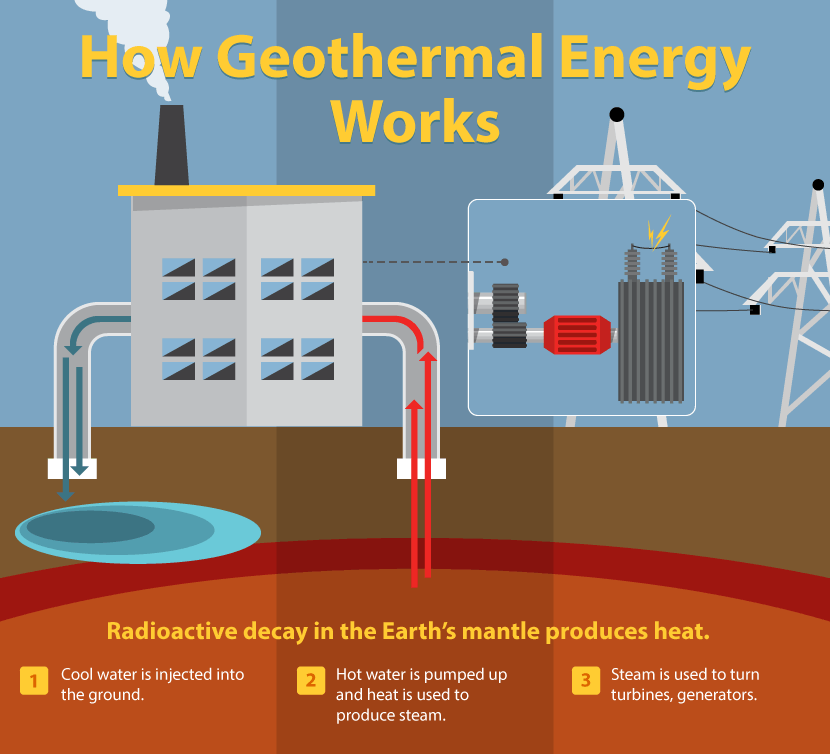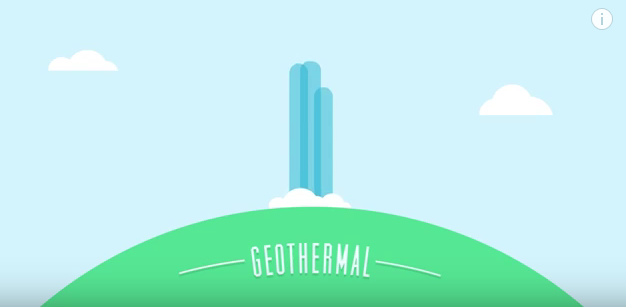Geothermal energy is the heat from the earth that is clean and sustainable. The source of the heat is from radioactive decay of minerals and continual heat loss from inside the earth. The heat is tapped and pumped to earth’s surface and is used to heat or cool buildings and can also generate electricity through turbines or generators with the occurrence of steam.24
Click the image below for the 101 on geothermal energy.
- Pros: Geothermal energy produces little to no greenhouse gas emissions, it is renewable and sustainable because it uses heat from the earth, and geothermal energy is also a reliable, long term source of heat and electricity.24
- Cons: Geothermal energy can only be used in specific geographic locations i.e. volcanically and tectonically active areas (think hot springs areas).24 However, there are new studies influencing artificial geothermal energy using the sun. Another concern is geothermal energy requires the use of groundwater which people fear polluting and deteriorating its supply. Energy production can also unintentionally release carbon dioxide into the atmosphere because the pump still requires some source of power. Lastly, the cost for startup is expensive and the ability to store the energy produced is lacking though the reason for that could be that geothermal energy is under-popular worldwide, with the exception of Iceland.24

Image 10
Geothermal energy is stored in rocks and fluids circulating underground. The use of geothermal as an source energy requires the use of the earth as a potential energy battery for extracting naturally heated steam or hot water from underground reservoirs.25
